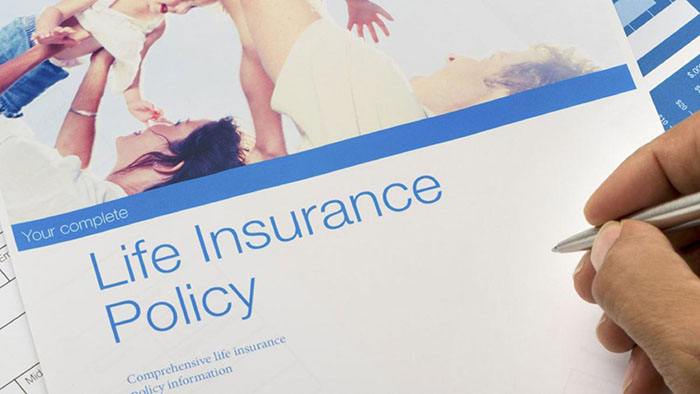The fall season means cooler temperatures, falling leaves, football, and pumpkin spice everything. It’s also a good reminder to prepare your home for seasonal changes and colder weather.
Whether you have home improvement projects on your to-do list or necessary repairs that need your attention, preparing your home for the fall takes time — and money.
A personal loan could be just the fix to cover upfront costs for home repairs and upgrades.
Keep reading to learn how a personal loan can keep your house in tip-top shape this fall season.
What Is a Personal Loan?
Personal loans are unsecured loans that do not require collateral.
Instead, lenders look at an applicant’s credit score, credit history, financial history, and other factors to determine eligibility and set rates and terms.
Personal loan amounts, rates, and terms vary widely among lenders. Some lenders allow you to check rates online before applying without hurting your credit score.
Why Choose a Personal Loan to Get Your Home Ready for Fall
Fall home improvements, upgrades, and repairs can get expensive.
Homeowners have several options available to cover costs.
If you don’t have money set aside already to cover the cost of home repairs, a personal loan can help cover upfront costs, allowing you to pay back the money over time.
Depending on your credit and other factors, you could qualify for a lower interest rate than offered with other payment options.
Below are other options to consider when tackling home improvement projects this fall and how they stack up to personal loans.
Credit cards
Using credit cards to pay for home improvements can help provide funds upfront, but remember you usually need to pay off your balance quickly to avoid expensive interest charges.
A card that offers an introductory 0% APR on purchases could alleviate interest fees for a set period.
But if you fail to pay off the balance within the promotional period, you could get stuck with high interest rates on the entire balance.
Home equity loan
A home equity loan lets you use your home’s equity to receive funds for home improvements or other needs.
It’s a viable option, especially if you don’t want to refinance your home and qualify for a lower interest rate.
Home Equity Line of Credit (HELOC)
Another way to tap into your home equity is through a home equity line of credit (HELOC).
Instead of receiving a lump sum of money, HELOCs give you a line of credit to use as desired.
Plus, it allows you to only borrow what you need and pay it back over time.
Unfortunately, there’s always the risk of overspending, similar to credit cards.
It also adds an element of risk since your home becomes collateral for the loan.
Cash-out refinance
A cash-out refinance is a type of refinancing loan that allows you to tap into your home’s equity.
Lenders generally will let you refinance your home and take out more cash up to a specific percentage of your home’s value.
It’s another example of accessing cash but also taking a risk using your home as collateral.
A personal loan could be a better option, especially if you want to avoid adding long-term interest charges for short-term home improvement projects.
While there are risks when you take out a personal loan, they might not be as severe as you’ll experience choosing one of the alternatives mentioned above. Analyze your situation and finances to determine the best course of action.
Home Maintenance to Prepare Your Home for Fall
As fall approaches, there are aspects of your home you should check yearly to ensure you’re home is protected through the winter months.
Below are home features that need to be inspected annually and replaced or repaired if there’s an issue.
Insulation
Insulation not only protects your home but can save you considerable money.
The Environment Protection Agency (EPA) estimates that homeowners can save an average of 15% on heating and cooling costs with proper insulation and sealing in their homes.
Ensure your home is properly insulated. Check for air leaks around doors and windows, using weather stripping and caulk to fix minor issues.
Furnace
Have your furnace checked annually by a professional to ensure it’s in proper working order and won’t break down in the middle of the winter. It’s also a good time to switch out the filter.
The average furnace costs over $4,600, with installation and other costs adding another $2,800 or more.
Windows
Check your windows and screens for drafts and other issues.
Upgrading your home to energy-efficient windows will keep your home warmer in the winter and cooler in the summer, and save money over time.
You can replace all of the windows in your home at once or start with rooms that need to upgrade the most.
Roof
Get out the ladder and do a visual inspection of your roof.
Look for any damaged or missing shingles that could cause issues during the winter.
Repair your roof if you’re experiencing any leaks.
Gutters
Clean your gutters to remove debris and leaves.
It’s also a good time to check for leaks or install gutter guards to cut down on cleanup time in the future.
Dead trees
Inspect trees on your property (or hire an expert) for signs of illness or dead trees or branches.
Failure to take care of troublesome trees or branches could pose a safety risk to you and your neighbors.
Storage shed
If you don’t have one yet, a shed provides additional storage space for lawn equipment, power tools, chemicals, outdoor toys, and recreational equipment.
If you have a shed, check that it’s properly sealed and safe from moisture and other elements that could damage your belongings.
Siding
Siding not only improves your home’s curb appeal, but it protects your home from water damage.
Inspect your home’s siding for any cracks or holes that need to be repaired. Consider upgrading your home’s siding this upcoming year if you have older siding.
Choosing the Right Personal Loan
Finding the best personal loan depends on your needs and whether or not you meet a lender’s credit and other requirements.
Personal loan rates and terms vary between lenders. Shop around with lenders that allow you to prequalify for a loan without hurting your credit score. Compare offers to find one that fits best.
You can also use AmONE’s matching service to find recommended lenders that meet your lending needs.
FAQs
Why is fall home maintenance important?
A home is one of the most significant investments individuals and families make. A well-maintained home can save money and provide a safer environment for yourself and your neighbors.
What are the most important home maintenance tasks?
Homeowners should create a checklist of annual maintenance tasks, including inspecting heating and cooling systems, windows, doors, roof and gutters, interior and exterior walls and insulation, and any other areas of concern.
What is a home improvement loan?
A home improvement loan is an unsecured personal loan specifically for home improvement expenses. Some lenders offer home improvement loans or general personal loans that can be used for home improvement projects.
What is the minimum credit score for personal loans?
Credit score requirements vary between lenders. Some lenders offer loans for individuals with scores as low as 500, while others only approve loans for individuals with good to excellent credit scores.
How fast can I get approved for a personal loan?
The loan application process varies greatly from lender to lender. Some lenders may approve loan applications the same day you apply, while others may take up to a week or longer to make a decision. You can potentially speed up the application process by providing the required information and documentation when asked.
How much can I borrow in a personal loan?
Personal loan amounts vary based on the lender. Many lenders offer personal loans as low as $1,000 up to $50,000. Some lenders offer personal loans for up to $100,000 and beyond.























